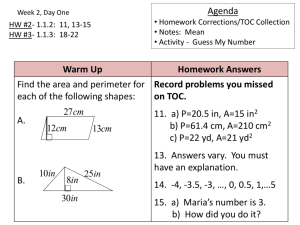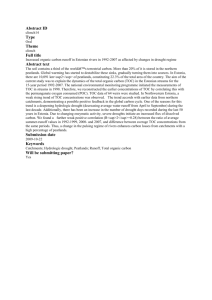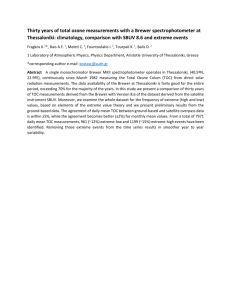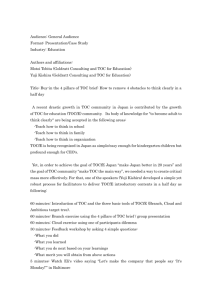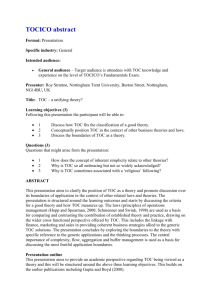Modern TOC Distribution
advertisement
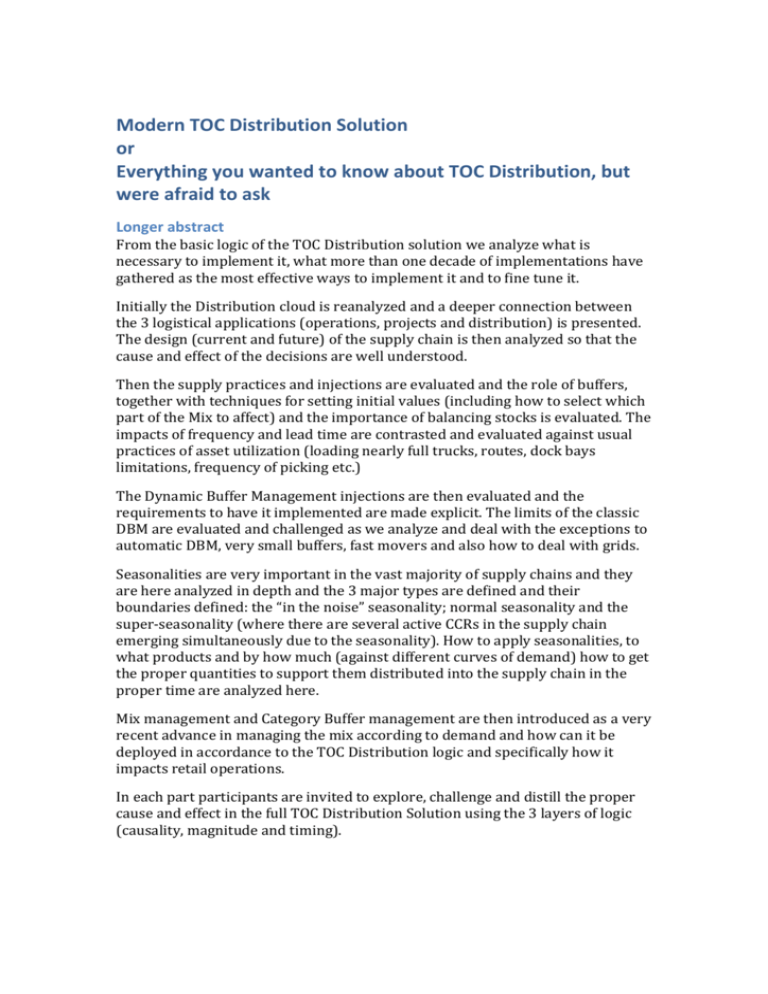
Modern TOC Distribution Solution or Everything you wanted to know about TOC Distribution, but were afraid to ask Longer abstract From the basic logic of the TOC Distribution solution we analyze what is necessary to implement it, what more than one decade of implementations have gathered as the most effective ways to implement it and to fine tune it. Initially the Distribution cloud is reanalyzed and a deeper connection between the 3 logistical applications (operations, projects and distribution) is presented. The design (current and future) of the supply chain is then analyzed so that the cause and effect of the decisions are well understood. Then the supply practices and injections are evaluated and the role of buffers, together with techniques for setting initial values (including how to select which part of the Mix to affect) and the importance of balancing stocks is evaluated. The impacts of frequency and lead time are contrasted and evaluated against usual practices of asset utilization (loading nearly full trucks, routes, dock bays limitations, frequency of picking etc.) The Dynamic Buffer Management injections are then evaluated and the requirements to have it implemented are made explicit. The limits of the classic DBM are evaluated and challenged as we analyze and deal with the exceptions to automatic DBM, very small buffers, fast movers and also how to deal with grids. Seasonalities are very important in the vast majority of supply chains and they are here analyzed in depth and the 3 major types are defined and their boundaries defined: the “in the noise” seasonality; normal seasonality and the super-seasonality (where there are several active CCRs in the supply chain emerging simultaneously due to the seasonality). How to apply seasonalities, to what products and by how much (against different curves of demand) how to get the proper quantities to support them distributed into the supply chain in the proper time are analyzed here. Mix management and Category Buffer management are then introduced as a very recent advance in managing the mix according to demand and how can it be deployed in accordance to the TOC Distribution logic and specifically how it impacts retail operations. In each part participants are invited to explore, challenge and distill the proper cause and effect in the full TOC Distribution Solution using the 3 layers of logic (causality, magnitude and timing).

